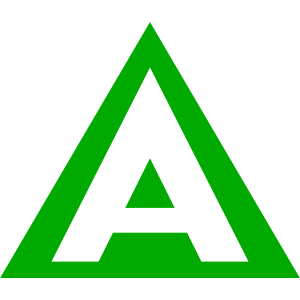As a parent, it’s understandable to worry about your child’s safety, especially when it comes to fires. While it’s important to have a fire extinguisher in your home, it’s equally important to know how to use it correctly.
One way to ensure that you are using the right type of fire extinguisher is by understanding the symbols on it.
In this comprehensive guide, we will discuss the different classes of fires, the types of fire extinguishers, and the meaning of the symbols on the extinguishers.
Be sure to call 911 in the event of a proper emergency!
Classification of fuels (Class A, B, C, D)
Fires are classified according to the type of fuel that is burning. Using the wrong type of fire extinguisher on the wrong class of fire can make matters worse.
Therefore, it is essential to understand the four different fire classifications.
Class A – Ordinary Combustibles

The background of the symbol for Class A will be either metallic green or green. Class A fires involve solid combustible materials that are not metals such as wood, paper, textiles, and some plastics.
Tip: Remember that Class A fires generally leave an ash.
Class B – Flammable or Combustible Liquids and Gases

The background of the symbol for Class B will be either metallic red or red. Class B fires involve flammable or combustible liquids and gases such as gasoline, diesel fuel, paint, paint thinners, and propane.
Tip: Remember that Class B fires generally involve materials that boil or bubble.
Class C – Energized Electrical Equipment

The background of the symbol for Class C will be either metallic blue or blue.Class C fires involve electrical equipment, such as fuse boxes, circuit breakers, appliances, and machinery, as long as it is “plugged in.”
Tip: Remember that Class C fires generally deal with electrical current.
Class D – Combustible Metals

The background of the symbol for Class D will be either metallic or yellow. Class D fires involve combustible metals such as sodium, potassium, magnesium, and titanium. These types of fires take special extinguishing agents (Metal-X, foam) to fight.
Tip: Unless you work in a laboratory or in an industry that uses these materials, it is unlikely you’ll have to deal with a Class D fire.
Types of Fire Extinguishers
Different types of fire extinguishers are designed to fight different classes of fire. It is vital to always use the right type of fire extinguisher when putting out a small fire.
Leave big fires to the fire department and call 911!
There are four main types of fire extinguishers commonly used for different classes of fires. These include:
- Water (APW): Water fire extinguishers are best suited for Class A fires, which involve ordinary combustibles such as wood, paper, and cloth. These extinguishers are not suitable for use on electrical fires or flammable liquid fires.
- Carbon Dioxide (CO2): Carbon dioxide fire extinguishers are most effective for Class B and C fires, which involve flammable liquids and electrical fires. They work by smothering the fire and removing the oxygen fuel source.
- Dry Chemical (ABC, BC, DC): Dry chemical fire extinguishers are effective for Class A, B, and C fires. These extinguishers use a fine powder to coat the fuel and smother the fire. There are different types of dry chemical extinguishers available, including ABC, BC, and DC, which are suitable for different types of fires.
Wet Chemical: Wet chemical fire extinguishers are designed specifically for use on Class K fires, which involve cooking oils and fats. They work by creating a barrier between the fuel and oxygen source, and also cool the fire to prevent re-ignition.
Tips for Using a Fire Extinguisher
In case of a small fire, a fire extinguisher is a useful tool to have on hand. If you need to use a fire extinguisher, remember the acronym PASS:
P – Pull the pin
A – Aim the nozzle at the base of the fire from a safe distance
S – Squeeze the handle to release the extinguishing agent
S – Sweep the nozzle back and forth across the base of the flames
Note that there are a few safety precautions to keep in mind before attempting to use a fire extinguisher:
- Always call the fire department before attempting to put out a fire with an extinguisher. It is better to be safe than sorry.
- Only use an extinguisher on a small fire. If the fire is too big, evacuate the building immediately and call the fire department.
- Always stand with an exit to your back when using an extinguisher, so that you can quickly and easily escape if the fire spreads.
- Always make sure that you have the correct type of extinguisher for the type of fire you are trying to put out.
- Never turn your back on a fire, even if you think you have extinguished it.
Never attempt to fight a fire if you are unsure about how to use the extinguisher or if you are afraid of the fire.
Inspection of Fire Extinguishers
Fire extinguishers must be inspected regularly to ensure they are in good working condition.
Regular inspections help identify any damage, wear and tear, or defects that may prevent the extinguisher from working properly in the event of a fire.
Here are the steps involved in inspecting fire extinguishers:
- Verify the location: Ensure that the extinguisher is in the designated location and is easily accessible. Extinguishers must be located at strategic locations throughout the building, including near exits, hallways, and stairways.
- Check the pressure gauge: The pressure gauge on the extinguisher should be in the green zone, which indicates that it is fully charged and in good working condition.
- Check the condition of the extinguisher: Extinguishers must be free from any signs of damage, corrosion, or leakage. Check the body, nozzle, and hose for any visible signs of wear and tear.
- Inspect the inspection tag: The inspection tag contains important information about the last inspection date and the next scheduled inspection date. Ensure that the inspection tag is up-to-date and is signed by a certified fire extinguisher technician.
Maintenance of Fire Extinguishers
Maintaining (commerical or industrial) fire extinguishers is critical to ensuring that they are always in good working condition.
Fire extinguishers should be serviced at regular intervals, as per the manufacturer’s recommendations, and in accordance with local and state regulations.
Here are the steps involved in maintaining fire extinguishers – note that some household extinguishers are single use or have different maintenance requirments:
- Recharge the extinguisher: Recharging is necessary after the extinguisher has been used or if the pressure gauge indicates that it is no longer in the green zone.
- Conduct hydrostatic testing: Hydrostatic testing is performed to ensure that the cylinder is in good condition and can withstand the pressure that is required to operate the extinguisher.
- Refill the extinguisher: Refilling the extinguisher is required after it has been used or after hydrostatic testing.
- Record maintenance activities: All maintenance activities must be documented in the inspection tag or maintenance record. This helps keep track of the maintenance history of the extinguisher and ensures that it is in compliance with local and state regulations.
Should You Fight a Fire?
We hope you’ll never have to fight a fire but if you’re facing a situation where you may need to use a fire extinguisher, it’s important to remember that fires can be very dangerous.
Your safety and that of others should always be your top priority. Here are some important rules to keep in mind when fighting a fire:
- Assist anyone in immediate danger to safety, if it can be done without risk to yourself.
- Activate the building fire alarm system or dial 911 to notify the fire department. This will ensure help is on the way and will alert other occupants in the building.
- If the fire is small and you’ve completed the first two steps, you may attempt to use an extinguisher to put it out.
However, before fighting the fire, keep these important rules in mind:
- Know what’s burning. If you don’t know what’s burning, you won’t know what type of extinguisher to use. Even if you have an ABC extinguisher, there may be something in the fire that could explode or produce highly toxic smoke.
- Don’t fight the fire if it’s spreading rapidly beyond where it started, or if you don’t have the appropriate equipment.
- Avoid fighting the fire if it’s producing large amounts of smoke that you would have to breathe in order to fight it. Synthetic materials such as nylon or foam padding can produce highly toxic gases that can be fatal in small amounts.
- If you’re uncomfortable with the situation for any reason, let the fire department handle it.
It’s important to always position yourself with an exit or means of escape at your back before you attempt to use an extinguisher. This way, if the extinguisher malfunctions or something unexpected happens, you can get out quickly and safely.
Remember, portable fire extinguishers discharge faster than most people think, often within 15 to 30 seconds. So if you choose to fight the fire, act quickly and with purpose.
Always be sure to have the fire department inspect the fire site, even if you think you’ve extinguished the fire.
In Conclusion
Having a fire extinguisher in your home is essential but knowing how to use it correctly is the key to keeping your family safe.
By understanding the different classes of fires, the types of fire extinguishers, and the meaning of the symbols on the extinguishers we can be prepared if and when disaster strikes.
Remember to choose the correct type of fire extinguisher to use in case of a fire emergency and only use a fire extinguisher on a small fire – always call the fire department if the fire is too big.
Regular inspection and maintenance of fire extinguishers are key to ensure they are in good working condition when needed. By following this guide, you can help keep your family and home safe in the event of a fire.
Grab a low-cost fire extinguisher for your home today
Check out these best sellers going for very reasonable prices!




